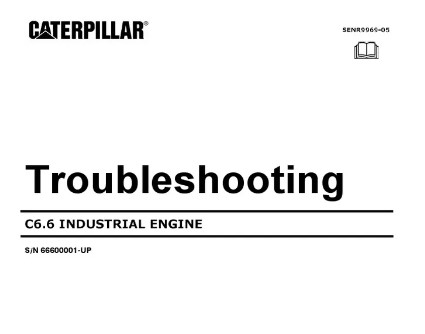Are you having trouble with your Caterpillar machinery? Don’t worry; we have the perfect solution for you! Our Caterpillar Troubleshooting Guide is designed to help you quickly and easily tackle any issues you have with your equipment. Get the help you need now and get back to work!
🎯Suggested article: Caterpillar Fuel Pump Problems
Caterpillar Troubleshooting: Solve Problems Quickly and Easily
Our Caterpillar Troubleshooting Guide is the ultimate resource for quickly and easily solving any issues with your Caterpillar machinery. Whether a simple maintenance check or a complex repair, our guide provides step-by-step instructions, helpful diagrams, and expert advice to get you back up and running in no time. Learn how to identify common problems and take the necessary steps to ensure your Caterpillar equipment runs smoothly. Get the help you need now, and start working again!
| Problem | Solution |
|---|---|
| Faulty fuel lines | Replace fuel lines and check for leaks |
| Clogged air filter | Replace air filter and clean air intake |
| Engine misfiring | Check spark plugs and ignition system |
| Overheating | Check coolant level and inspect radiator |
| Excessive vibration | Check for loose parts and replace worn-out components |
Check Fluids
Checking the fluids in your Caterpillar machinery is an important step in troubleshooting and maintaining your equipment. First, check the oil and coolant levels, and top up if necessary. Then check the hydraulic fluid, transmission fluid, and fuel levels. If any of these are low or the fluids appear to be contaminated, contact your local Caterpillar dealer for further advice.
Inspect Belts and Hoses
Inspecting the belts and hoses of your Caterpillar machinery is an essential part of troubleshooting. Check for any potential damage, such as cracking, fraying, or loose connections. If any of these are present, contact your dealer immediately. Replacing faulty belts and hoses can help prevent further damage and ensure your equipment is running safely and efficiently.
Cleaning
Cleaning your Caterpillar machinery is critical for maintaining its performance. Remove dirt, dust, and debris from the exterior of the engine, and clean the air filter to ensure proper air flow. Additionally, inspect the spark plugs and clean or replace them if necessary. Cleaning your machinery regularly can help prevent costly repairs and ensure it runs smoothly.
Tighten Connections
Tightening loose connections is an important part of Caterpillar troubleshooting. Check all the nuts and bolts on the engine, and tighten any loose connections. Additionally, check the electrical connections and make sure they are secure. Tightening all the connections can help ensure your machinery is running optimally and minimize the risk of breakdowns.
The Caterpillar Troubleshooting Guide has been designed to help you quickly and easily diagnose and resolve any issues you may be having with your equipment. By following the simple steps outlined in the guide, you can identify potential problems and take the necessary steps to keep your machinery running smoothly. From checking fluids and inspecting belts and hoses, to cleaning and tightening connections, the guide provides comprehensive information to help you troubleshoot any issues with your Caterpillar machinery.
💥See also: Caterpillar 3196 Marine Engine Problems
Key Takeaways from Caterpillar Troubleshooting Guide
- Check the oil and coolant levels and top up if necessary.
- Inspect the belts and hoses for damage or loose connections.
- Clean the air filter to ensure proper air flow.
- Clean and replace the spark plugs if necessary.
- Tighten any loose connections on the engine and electrical connections.
- Follow the troubleshooting steps outlined in the guide.
The Caterpillar Troubleshooting Guide is a great resource for anyone looking to keep their machinery running optimally. Regularly checking fluids, inspecting belts and hoses, cleaning the engine, and tightening connections can help prevent costly repairs and ensure your equipment is running safely and efficiently. By following the steps outlined in the guide, you can identify potential problems and take the necessary steps to keep your Caterpillar machinery in top condition.
🚨You may be interested in: Caterpillar Oil Pressure Problems
Conclusion: Taking the Necessary Steps for Optimal Caterpillar Machinery Performance
By following the simple steps outlined in the Caterpillar Troubleshooting Guide, you can identify and resolve any issues with your equipment and ensure it is running smoothly. Taking the time to regularly check fluids, inspect belts and hoses, clean the engine, and tighten connections can help prevent costly repairs and maximize the performance of your Caterpillar machinery. With this guide, you can take the steps necessary to keep your Caterpillar equipment in top condition.
👀Look at this: Caterpillar C13 Problems
